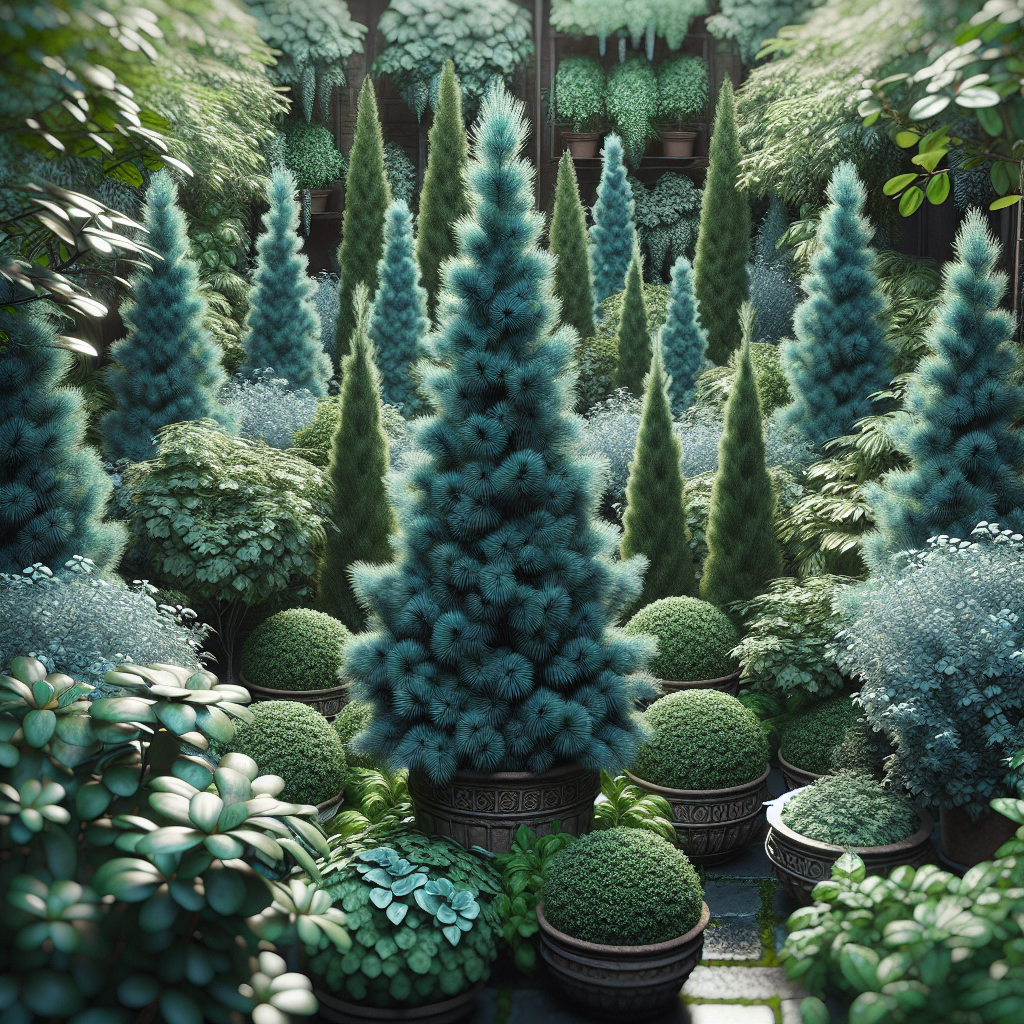Creating a Mini Evergreen Garden with Blue Point Juniper in Pots
If you’re looking to add a touch of greenery to your outdoor space but don’t have much room for a full-fledged garden, creating a mini evergreen garden with Blue Point Juniper in pots might be the perfect solution. Blue Point Juniper, known for its beautiful blue-green foliage and conical shape, is a popular choice for container gardening due to its compact size and low maintenance requirements.
In this article, we will guide you through the steps of creating your very own mini evergreen garden with Blue Point Juniper in pots. From selecting the right containers and potting soil to proper care and maintenance, we will cover everything you need to know to successfully cultivate these stunning plants in your outdoor space.
Selecting the Right Containers
When it comes to growing Blue Point Juniper in pots, selecting the right containers is crucial. Choose containers that are at least 12-16 inches in diameter and have drainage holes at the bottom to prevent water from pooling and causing root rot. Additionally, opt for pots made of lightweight materials such as fiberglass or resin, as Blue Point Juniper can become quite heavy when fully grown.
Potting Soil
Blue Point Juniper thrives in well-draining soil that is slightly acidic. To create the perfect growing medium for your plants, mix equal parts of potting soil, sand, and perlite or vermiculite. This will ensure good drainage while providing the necessary nutrients for healthy growth.
Planting
Once you have selected the right containers and potting soil, it’s time to plant your Blue Point Juniper. Begin by filling the bottom of the pot with a few inches of gravel or broken pottery pieces to improve drainage. Next, gently remove the plant from its nursery container and loosen the roots before placing it in the center of the pot. Fill in any gaps with additional potting soil mix, making sure not to bury the crown of the plant.
Placement
Blue Point Junipers thrive in full sun but can also tolerate partial shade. Place your pots in an area that receives at least 6-8 hours of sunlight per day for optimal growth. Additionally, make sure to rotate your pots regularly to ensure even growth on all sides of the plant.
Watering
Blue Point Junipers are drought-tolerant plants that prefer slightly dry soil over consistently wet conditions. Water your plants deeply once a week during hot summer months and reduce watering frequency during cooler seasons. Always check the moisture level by sticking your finger into the soil before watering to prevent overwatering.
Fertilizing
During the growing season (spring through fall), feed your Blue Point Junipers with a balanced fertilizer every 4-6 weeks to promote healthy growth. As these plants are slow-growing, avoid using high-nitrogen fertilizers that can result in excessive foliage at the expense of root development.
Pruning
Blue Point Junipers require minimal pruning but benefit from occasional shaping to maintain their conical form. Trim back any wayward branches or deadwood using sharp pruning shears during late winter or early spring when new growth begins.
Pest and Disease Control
While Blue Point Junipers are generally resistant to pests and diseases, they can be susceptible to spider mites and scale insects under stressed conditions. Inspect your plants regularly for signs of infestation such as webbing or sticky residue on leaves and treat promptly with insecticidal soap or neem oil if necessary.
Winter Care
Blue Point Junipers are cold-hardy plants that can withstand temperatures down to -20 degrees Fahrenheit once established. However, potted plants are more vulnerable to freezing temperatures due to limited insulation around their roots. To protect your plants during winter months, move them indoors or wrap them with burlap cloth if temperatures drop below freezing.
In conclusion, creating a mini evergreen garden with Blue Point Juniper in pots is a rewarding way to add beauty and greenery to small outdoor spaces. By following our guide on selecting containers, potting soil, planting techniques, care tips, and maintenance practices, you can successfully cultivate these stunning plants year-round with minimal effort. So why wait? Start creating your own mini evergreen garden today!













